Knives are arguably one of the most important tools in the kitchen, with the paring knife being one of the most commonly used. But you won’t get very far with cooking if your knives are not sharp enough. This brings into question: How do you sharpen a paring knife? And how sharp should it be? We've done the work to bring you the answer.
You can sharpen a paring knife using a whetstone or a pull-through sharpener. There are many ways to test if the knife is sharp enough, but the easiest way is to complete the paper test or the tomato test.
There is a technique to how you sharpen using a whetstone; it is important to follow this technique to keep your knife blade smooth and sharp. We will explain the paper test, tomato test, and more ways to find out if your knives are sharp enough further in the article below. Stay with us!
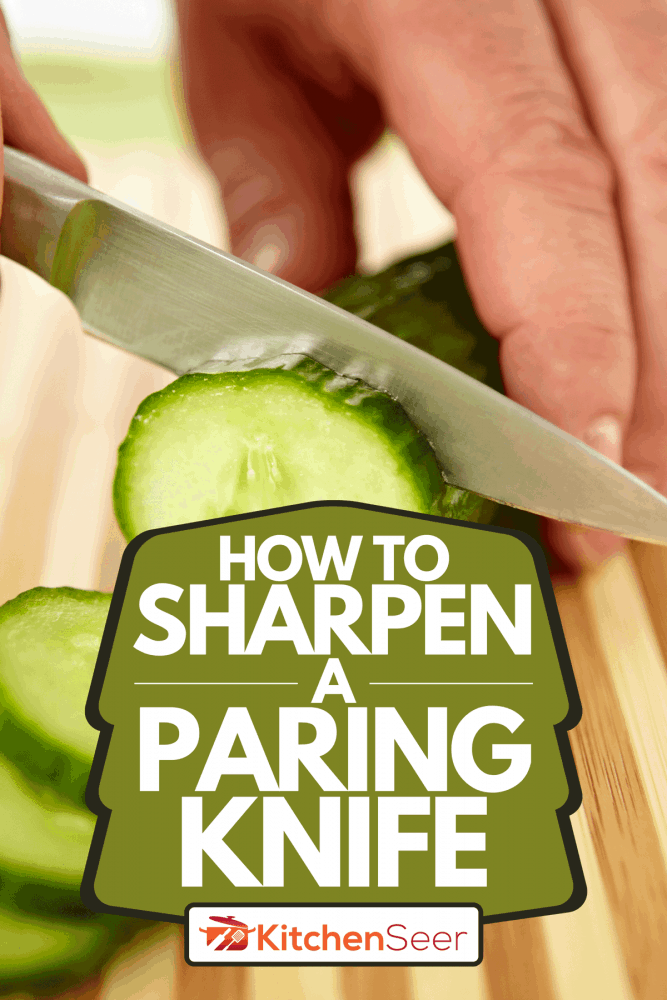
What Is The Best Thing To Sharpen Your Knife With?
There are two main options for sharpening your paring knives. Option one is the preferred way, a whetstone. By sliding the blade across it, you can straighten and sharpen the cutting edge of the knife. Option two is an easy option to use, however, it is much harder on your blades. This option is the pull-through sharpener, also called the 'V' style sharpener.
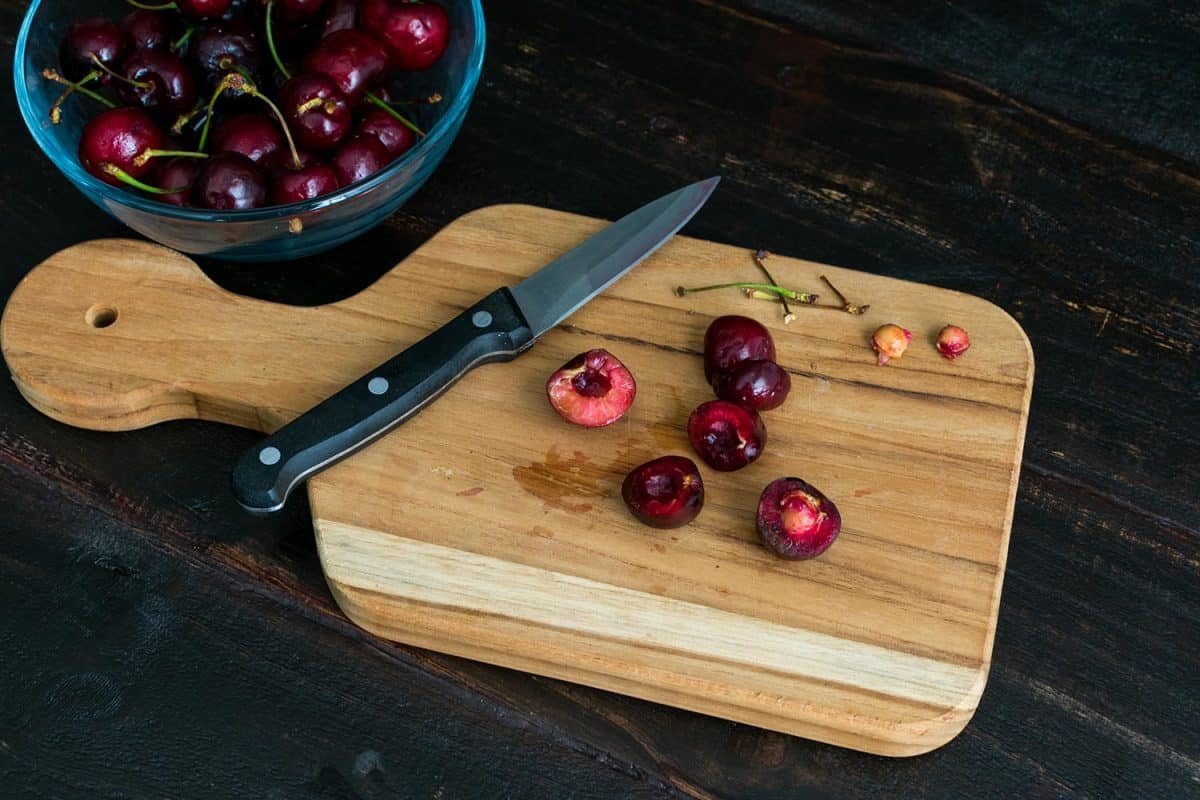
Can Paring Knives be Sharpened?
As we've said, yes, paring knives can be sharpened. In fact, they are so often used in most kitchens, you'll probably find sharpening essential. Now, if you'd like to know the best method, we'll discuss using both a whetstone and pull-through or 'V' style sharpener below.
How Do You Sharpen A Paring Knife With A Whetstone?
Whetstones are different-sized rectangular stones used to sharpen knives because they give the user control of angle and movement.
The first step to using a whetstone is submerging the stone in water for at least 10 minutes or until there are no more air bubbles. This is an important step because when the stone is wet, it prevents the blade from catching and creating nicks. The next step is to place the stone on a flat surface.
You will want to then place the knife flat against the stone, with the sharp edge towards you. Keep the cutting edge on the stone, but angle the blunt end up. The angle should be about 15 to 20 degrees; however, this does not have to be perfect as long as you keep the angle the same throughout the whole process.
As far as degrees go, the lower the degree, the sharper the knife edge will be. You do have to be cautious as the chance of chipping the blade raises as the degree lowers.
Do You Push Or Pull When Sharpening A Knife?
Now, on to actually sharpening the knife. You will want to guide the knife gently with your fingers, keeping it slightly diagonal to the edge of the stone, and sweep up the stone.
Make sure not to push too hard, or the risk of chipping gets higher. On the way back down the stone, sweep with even less pressure. You are done sharpening your knife after about 12 to 15 passes on each side, about 28 passes altogether.
How Do You Sharpen A Paring Knife With A Pull-Through Sharpener?
A pull-through sharpener is shaped like a 'V'; that is how it got the name V-style sharpener. You do this by placing the heel of the blade in the center of the 'V' and pulling the blade towards you until the whole blade has pulled through. About 10 swipes through should sharpen your knife.
The downside to a pull-through sharpener is it does not create a smooth edge as a whetstone does. Instead, it creates many micro serrations on the blade's edge; this is a different kind of sharp than a whetstone creates.
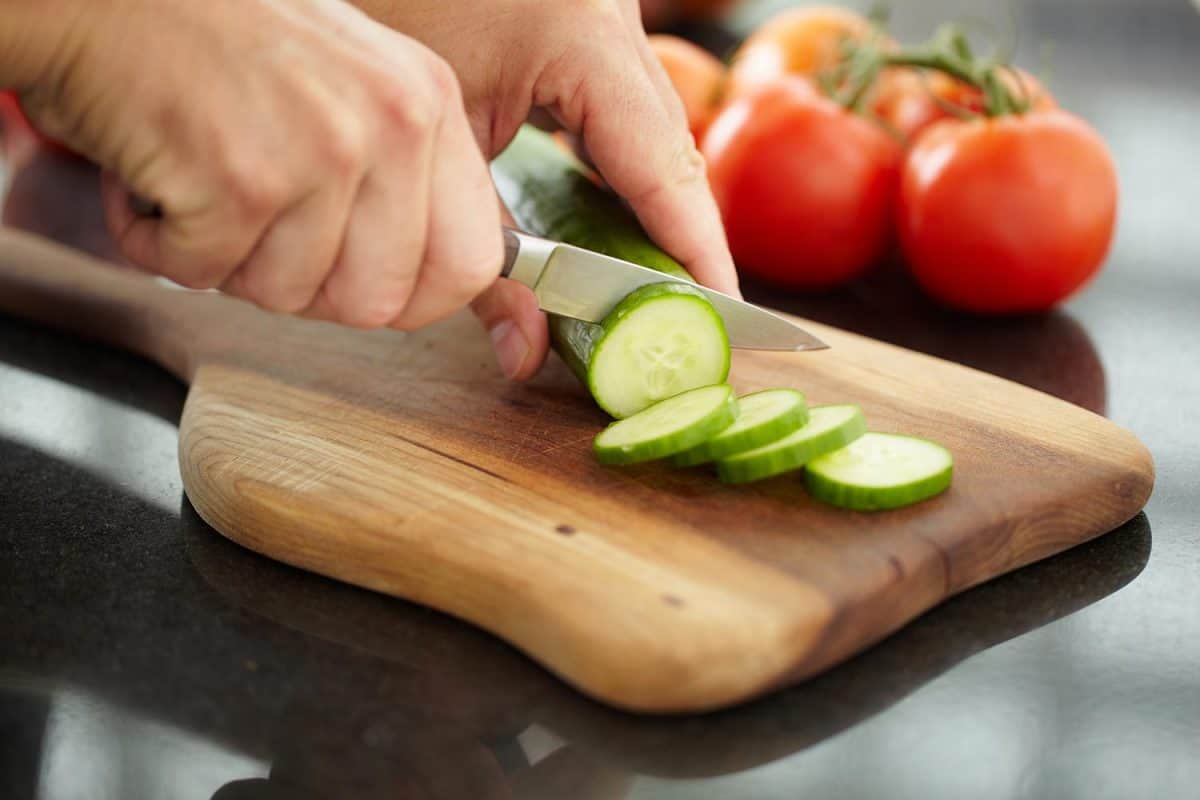
Why Is It Important To Use A Sharp Knife?
It is incredibly important to use a sharp knife when working in the kitchen because a dull knife is actually much more dangerous to use than a sharp knife. A dull knife takes away your control. It requires more force which can cause the knife to slip, and you, the user, can lose your grip, which can cause accidental cuts.
Why Your Knives May Be Dull
There are five main reasons your knives may be dull.
Improper Storage
Reason one is that you are not storing your knives properly. You should not throw your knives in with the rest of your kitchen silverware. While this may be easy, it is dangerous to reach your hand in a drawer with unsheathed knives, and this practice will cause you more work in sharpening your blades in the end.
The best way to store your knives is in knife blocks or sheathed in a drawer.
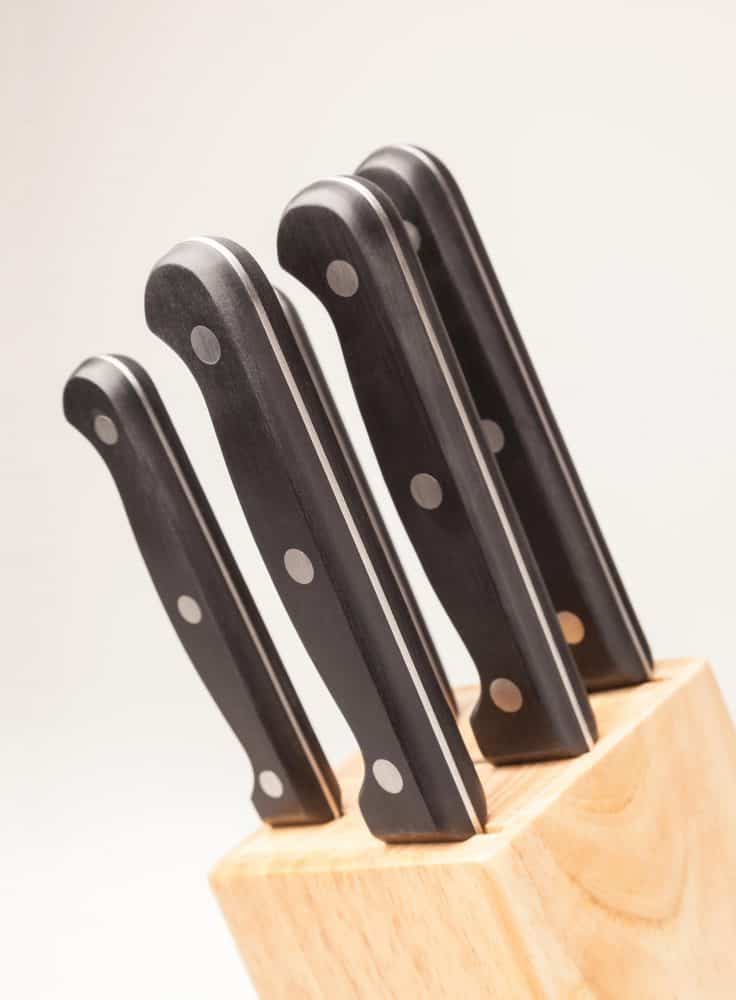
Dishwashing Vs. Handwashing
Reason two is that you are not handwashing your knives. Putting them in the dishwasher will dull them much faster.
Cutting Board Material
Reason three of why your knives may be dull is that you are using a hard cutting board (or no cutting board at all). The best type of cutting board is a wood board because it allows a little bit of movement instead of the knife hitting the hard plastic.
Blade Quality
Reason four is that the quality of the blade is not great. This can cause the knife to chip and dull much faster than a quality blade would.
Regular Sharpening
Finally, reason five, you do not take the time to regularly sharpen your kitchen knives. Although it may seem like a lot of work, it is best to make sure you are regularly sharpening them. This is to keep the blades from being damaged while dull.
When Should I Sharpen My Knife?
The first rule of thumb, if your knife is noticeably dull, you need to sharpen it. Some chefs sharpen routinely to ensure always having a sharp knife at the ready in the kitchen. Although it is suggested, it is not necessary. There are many ways to test if your knife is dull.
Some things to look out for include:
- Mushy tomato
- Slippery onion
- Loud pepper
- Split carrot
First, if you are not getting clean cuts through a tomato, your knife is dull. You should be able to slice or dice your tomatoes and not end up with complete mush at the end.
You should be able to slice the onion cleanly; the knife should not slip off the edge of the onion. A sharp knife will be able to go right through the slipper outer edge and slice neatly through the onion.
Although hearing that snap the pepper makes as it is cut can be enticing, that is a sign of a dull knife. A sharp knife would cleanly and quietly slice through. The snapping sound you may hear is coming from the pepper splitting rather than being cut.
Finally, a split carrot. A carrot should slice evenly, not slice halfway, and split the rest. This is a sign your knife is not sharp enough to slide right through the carrot and instead gets stuck halfway.
For more information on when to sharpen your knives, check out this article on "How Often To Sharpen Kitchen Knives?"
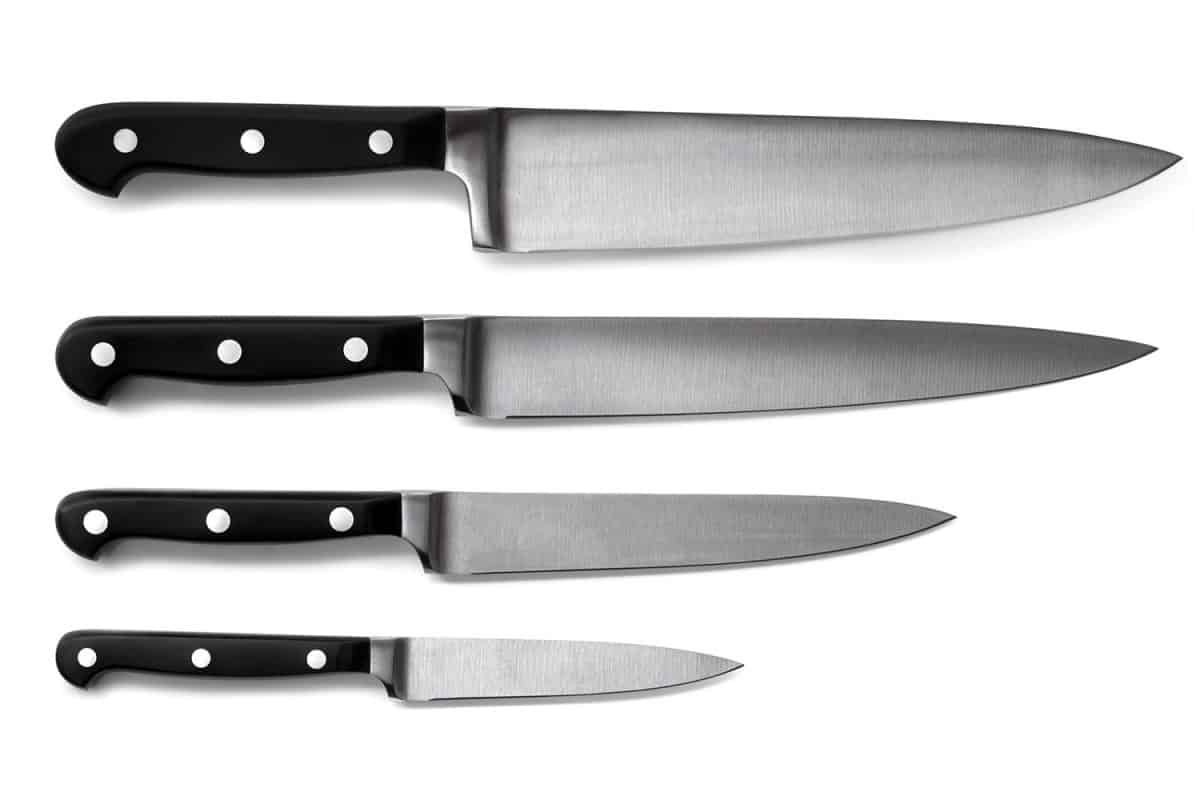
How Do I Know If My Knife Is Sharp Enough?
The best test to see if your knives are sharp enough is the paper test. You can perform the paper test by holding a piece of paper out in front of you by the corner with your non-dominant hand. Then with your dominant hand holding the knife, slicing the paper in half from top to bottom.
If your paper tears or rips, then your knife is dull. However, if it slices through evenly and smoothly, then your knife is sharp. You can also try slicing a tomato, onion, pepper, or carrot and see how they slice. Following the guidelines listed in the previous section, you should be able to test out if your knives are sharp enough.
In Closing
The best way to sharpen your kitchen’s paring knife is by using a whetstone. Perfecting the technique may take some time. By repeated, routine sharpening, you can have it down to a science in no time at all. Your knife should be sharp enough to smoothly slice through a tomato, carrot, and other vegetables without you losing control of the blade.
By taking good care of your knives, you can extend their usage and prepare beautiful creations in your kitchen. Maybe you will decide to start fresh, buy a quality, new set of knives. If that is the case, read this article on "How Much Does A Paring Knife Cost?"

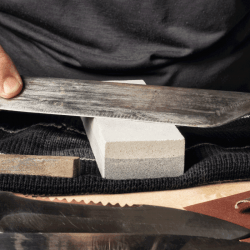


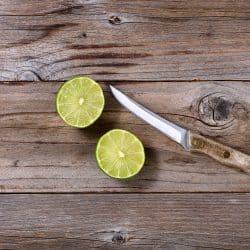
![knife and old iron sharpener with handle for kitchen knives on a white background, Do Knife Sharpeners Wear Out? [And When To Replace Yours]](https://kitchenseer.com/wp-content/uploads/2021/09/knife-and-old-iron-sharpener-with-handle-for-kitchen-knives-on-a-white-background-250x250.jpg)
![Kitchen knife with black handle on wooden board made of beech. What Can You Cut With A Paring Knife [How About Meat]](https://kitchenseer.com/wp-content/uploads/2021/09/Kitchen-knife-with-black-handle-on-wooden-board-made-of-beech.-What-Can-You-Cut-With-A-Paring-Knife-How-About-Meat-250x250.png)